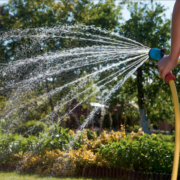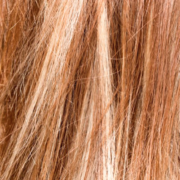Parents can quickly become concerned and overprotective, especially with their first child. The fear of doing something wrong is great. In certain areas it is important to obtain extensive information and to adhere to certain “rules”. For other problems, it’s better to listen to your gut feeling. We answer the most important questions about the use of water in baby food. So that you know when to listen to your intuition and when it is better not to.
Can i use tap water?
Basically, this question can be answered with a clear yes. The tap water in Austria is principally of high quality and is more strictly controlled than mineral water. The controlled limit values are based on adults. If you are unsure whether the quality is also suitable for babies, you can easily ask the waterworks. This is a little more difficult with a domestic well. Here is a water test advisable, which is geared precisely to the needs of babies and toddlers.
However, the last few meters, i.e. the water pipes in the house, are decisive for the water quality. The water supplier cannot guarantee this. In some old houses these days there are still lead pipes, if the water comes out of them, it is definitely not suitable for baby food. Copper tubing can also be problematic. You should be careful here with new buildings, as relatively much copper is released into the water through the pipes in the first three years. In case of doubt, a water test saves you unpleasant surprises or lugging around with purchased water.
In principle, always let the water run off first. If it has been in the pipe for a long time, we speak of so-called stagnation water, which absorbs many substances from the pipe and sometimes also has a higher number of germs. Even if the tap has not been turned on for an hour, standing water is already unsuitable. Let it drain until it is evenly cool. Usually it takes between two and five liters. Whether tap water has to be boiled before use is controversial. Some doctors recommend boiling the water during the baby’s first six months of life. Others believe that it promotes allergies.
Our water at home is very hard. Will that harm my child?
Lime looks unsavory when it is in the kettle deposits. But don’t worry: the white coating consists of the minerals calcium and magnesium, which pose no danger to the human organism. In principle, they are even healthy. However, in the small amount in which they occur in our drinking water, this has hardly any effect on the human body.
However, the body of babies can sometimes not handle the minerals that well. Hard water can therefore lead to gas and constipation in sensitive children. When preparing bottles, some parents also have bad experiences with hard water. The milk powder does not dissolve well in it. This is why some parents soften their water. But be careful with filter jugs required: These germinate very quickly and can thus burden babies much more than the unfiltered water.
Should my baby drink water in addition to breast milk or a bottle?
Babies who are breastfed or who are given milk mixed with powder do not need additional fluids. As soon as complementary food is started, it makes sense to offer the child a drink. But don’t despair if he doesn’t want to drink at first. As long as you still feed it predominantly with milk, no further liquid is required. Only when the baby is given more porridge or complementary food than milk should it drink more.
Even in hot summers, no additional drinking is necessary at the beginning. If it is really very hot, simply offer the child the breast or the bottle more often. A bad idea is to dilute baby formula with water. The powder should always be mixed with water exactly as specified, as it is perfectly adapted to the needs of the baby. Sometimes there are still doubts as to whether the child is drinking enough fluids. If the diaper is wet three times a day, there is no reason for such doubt.
What should my child drink with complementary food?
The following applies to the first drinks in baby’s life: the more natural, the better. If your tap water is suitable for babies, it is perfect as a drink. When buying water, you should pay attention to the values for nitrate and sodium. Nitrate should contain a maximum of 10 milligrams per liter, sodium 20 milligrams. The values for sodium in particular are often far higher, as there are no limit values for this in mineral waters. Carbonated water is also unsuitable. The acid can cause flatulence or attack the enamel of the first few teeth.
Some parents like to use special baby teas as a drink. Here it is important to pay attention to natural ingredients and not to sweeten the tea. Some teas are more likely to be considered medicinal products due to their ingredients. It is best to ask your pediatrician which tea he recommends. Caffeinated drinks such as black tea or cola are definitely not suitable for the little ones. Lemonades are also taboo due to their sugar content and carbon dioxide. Fruit juices, on the other hand, are fine when diluted. But they should rather be an exception. If the child drinks sugary drinks from an early age, this can lead to tooth decay even before the first teeth break through.











